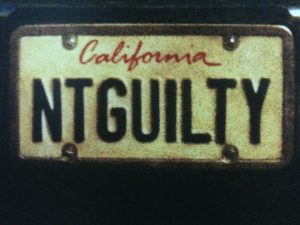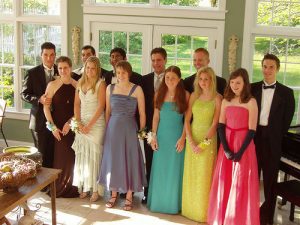
Not Guilty by Ged Carroll, courtesy Flickr.com.
I’m doing the right thing. Or am I?
I was raised on a diet of guilt, albeit one well seasoned with plenty of humor (a caveat I added so that I wouldn’t feel too guilty when my mother reads this). Guilt is so deeply embedded into my DNA that I really thought it would be the one aspect of motherhood I would have mastered in advance. After all, I’ve spent most of my life making important decisions based on the avoidance of future guilt (Can the dentist really tell if I skip one night of flossing? I’d rather watch The O.C., but what if Joey gets canceled because I stopped watching?).
I hear a lot of voices in my head, and while my mother’s is one of the loudest, I’m also haunted by Humphrey Bogart’s warning at the end of Casablanca: “If that plane leaves the ground and you’re not with him, you’ll regret it. Maybe not today, maybe not tomorrow, but soon and for the rest of your life.”
Of course, if I were Ingrid Bergman I would have felt guilty for even having the discussion about leaving my husband, especially outside in the rain, where I could have caught a cold and died, thus ruining my mother’s life.
Yet, despite so many years of guilty woulda coulda shoulda dress rehearsals in my head, I continue to be surprised by how entwined guilt is with motherhood.
I’m still reeling from last week’s doozy.
My husband and I went to Soho to hear a friend sing, a rare night out in adult world, while unbeknownst to us (cell phones only work if you can hear them ring) our son was vomiting — for several hours — all over grandma’s house.
My poor baby! My poor mom! Her poor carpet! My stomach still hurts from feeling guilty over my mistreatment of all three of them. Of course, my overdeveloped gag reflex doesn’t help.
While the part of me that hears voices is convinced that people with clear consciences have bad memories, or are just plain delusional, the more rational part of me has decided that all of this guilt has got to go. Therefore, this Mother’s Day (while part of me was enjoying being with my family and part of me was wishing I could be at a spa, with Sven the masseuse) I resolved that there are certain things I will no longer feel guilty about. The list includes:
1. Working full time. Yeah right, who am I kidding? Even though my husband stays home with our son, I am convinced that I could be doing a better job if I were the one to say home, which of course, I feel terribly guilty for even thinking about when he’s such a great father.
2. Being more lenient with my son than I should be on the weekends, because I want our time together to be fun. (Yeah sure. Want to lay odds on that one?)
3. Gelt guilt: the Jewish version of spending the weekend buying things for your child because you worked all week and you want your time together to be fun.
Clearly I’m aiming a bit too high — or I’m a total failure at guilt alleviation, which makes me feel simultaneously terrible and guilty. Maybe I should ease into this less ambitiously. From here on I resolve to not feel guilty:
4. About lusting after my childless friends’ bank accounts and social calendars.
5. That my son’s favorite song is “Psycho Killer” instead of “Requiem in D Minor.”
6. Taking that first, wonderful sip of my latte and feeling like a terrible mom for enjoying it when I could have stayed home with my son for five minutes longer instead.
7. That we let our son watch TV in the morning so we can sleep “just a little longer.”
8. That I sometimes pretend to be asleep in the hopes that my husband will get up with our child in the middle of the night.
9. That I sometimes pretend to be asleep in the hopes that my husband will not get up with me in the middle of the night.
10. That I pray I’ll be the only one home when I pull into the driveway.
11. … Then am annoyed that I rushed from work and there’s nobody there.
12. Doing a little happy dance when I go to work and my husband has to worry about what to feed our little darling for breakfast.
13. That my husband and I spend the majority of our date nights talking about our son, and not about things like “Requiem in D Minor.”
14. For feeling guilty and then blaming it on my DNA or the voices in my head.
15. Picturing my child telling his analyst about me one day.
16. … Then putting money in a therapy jar every time I do something I know he will tell his analyst about.
There, I actually feel better.
Or at least I will when I get home and put $16 in the therapy jar for writing this column.
Originally published in South Coast Beacon on May 12, 2005.



 Parents can relax a little this year, as skin is no longer quite so in for
Parents can relax a little this year, as skin is no longer quite so in for 
 Desperate Housewives? Man I can relate
Desperate Housewives? Man I can relate Reading comprehension, retention is the name of this popular game
Reading comprehension, retention is the name of this popular game